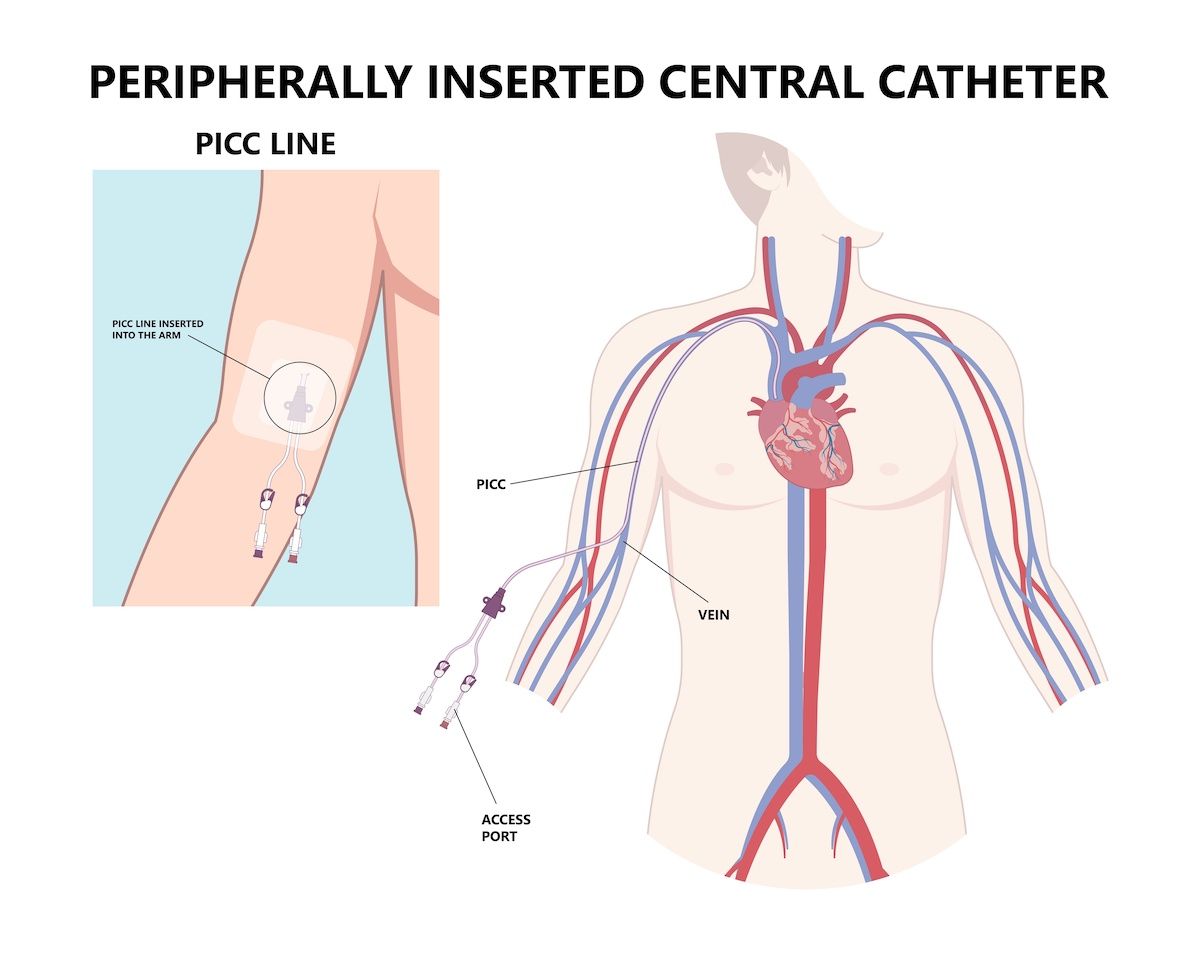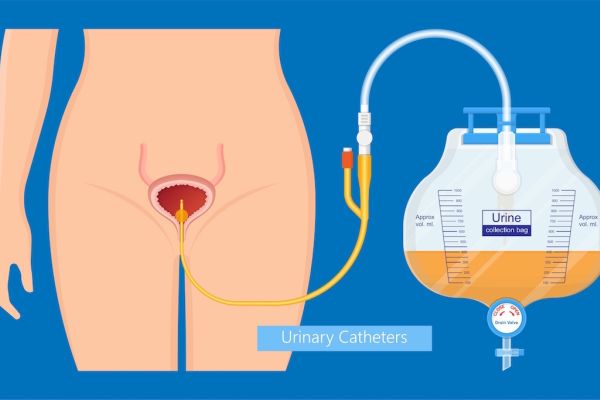Learn how to manage this routine part of cancer treatment.
A peripherally inserted central catheter (PICC) is an intravenous catheter placed in your arm that is used to deliver medications, fluids, or to obtain blood samples.
If you recently learned that your cancer treatment requires the placement of a PICC line, you may be scared because you don’t know what to expect. Take a moment, close your eyes, and take a deep breath. The way you are feeling is normal. A PICC line is a routine part of the cancer treatment journey for many people and offers many benefits. Read below for tips and advice to help you to feel confident in your ability to successfully manage your PICC line.
Why do I need a PICC line?
PICC lines are a commonly used device because they're helpful to patients and medical staff alike. First, they can be inserted and removed easily. Second, PICC lines can be used to give medications and solutions that may be irritating to the smaller veins typically found in the lower arm and hands, and these can be delivered without additional needle sticks. Lastly, PICC lines can be used reliably to obtain blood samples necessary for testing. Typically, a PICC line can remain in place for several weeks to months, depending on your needs.
How is the PICC line inserted?
A trained medical expert will place the PICC line in your upper arm, sometimes using ultrasound or x-ray to guide and confirm proper placement, while ensuring that sterile conditions are maintained throughout the procedure. You will be awake and given local anesthetic to numb your arm while the PICC line is being inserted. While you may feel pressure at the insertion site, you should not feel any pain. During the insertion, you will have to stay still. The procedure will typically take less than 30 minutes. Once the PICC is placed, it can be used immediately. The line usually has one or two lumens (tails) that will dangle from the upper part of your arm. The PICC line will not interfere with bending your arm.
What should I do with the dangling PICC lines?
A PICC line is a wonderful device that can make your treatment easier, but it can be awkward. We encourage patients to create a PICC line cover/sleeve from a piece of fabric to place around the PICC line insertion site. This will keep the ends of the line close to your arm. It's important to ensure there isn’t any tension on the PICC line, to make sure the PICC line does not get pulled, tugged, or snagged on anything. Numerous retailers sell stylish PICC line covers/sleeves. Pediatric patients should visit Courage of Carly to find information on fun PICC line cover/sleeve designs available to them at Roswell Park Comprehensive Cancer Center.
How do I care for my PICC line?
You must keep the PICC line insertion site clean and dry to reduce the risk of infection. Be sure to wash your hands every time before touching your insertion site. At your PICC line insertion appointment, you will be given educational materials. Review this information to ensure you are prepared to care for your PICC line at home. However, situations may arise where you have questions. If you have resistance or cannot flush the lumen, make sure the clamps are open as this is easy to overlook. Sometimes the syringe is not fully screwed in, so disconnect and try to reconnect. If it still doesn’t work, notify your clinic team at Roswell Park by calling 716-845-2300 for further instructions.
View our Patient Education Library
Our Patient Education Library offers a wide range of information from your Roswell clinicians and trusted organizations
Learn moreCan I shower with my PICC line?
Showering with a PICC line requires a bit of preparation. The most important thing is to keep the bandage that covers your PICC line insertion site clean and dry to prevent infection. The easiest way to do this is by wrapping the insertion site in plastic wrap. Next, secure both the upper and lower portion of the plastic wrap with tape to keep water away from the insertion site. Remember, always inspect your dressing to make sure it still has a good seal. If the dressing is starting to come off, it should be changed immediately. Contact your clinical team at Roswell Park with any questions.
What activities can I do?
Talk with your clinical team at Roswell Park about the activities that are safe for you. It is very important to ensure the PICC line does not get pulled or tugged on. In general, as long as you don’t put pressure on the line, you shouldn’t have any issues. Most light to moderate forms of exercise should be okay, such as walking, running and yoga. If any questions or concerns arise, don’t hesitate to contact your clinical team at Roswell Park.





